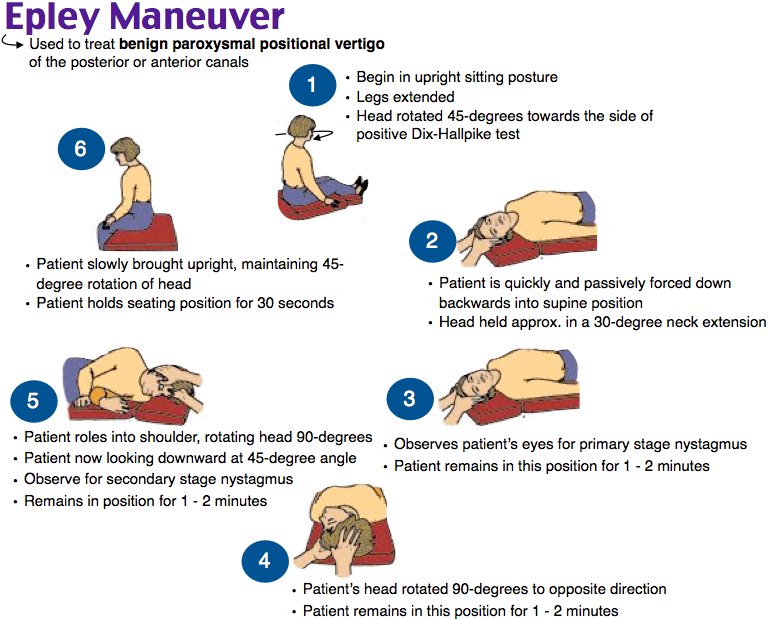

Your doctor might check your blood cell count, thyroid function, blood sugar levels, electrolytes, and more. Blood Work A blood test can reveal problems that could be to blame for your dizziness complaints.Vision Tests Sometimes vision tests are recommended to help doctors find a cause for vertigo symptoms.Computerized Tomography (CT) Scan A CT scan is often used to let doctors see abnormalities, such as fractures or thinning bone, around the inner ear.An MRI may show fluid buildup, inflammation in the inner ear, or a growth on the nerve. This test is often used in people with hearing loss or neurological symptoms to pinpoint a cause. It uses a magnetic field and radio waves to create images of the inside of your body. Magnetic Resonance Imaging (MRI) An MRI scan may be used to help your doctor identify possible causes for your vertigo symptoms and rule out others.One test, called electrocochleography, helps determine if fluid buildup is causing excessive pressure in your inner ear. There are several different types of hearing tests available. They can also help your physician figure out if there’s a problem with the nerve that connects the inner ear to the brain. Hearing Tests These tests, also known as audiometric tests, measure your hearing function and can detect issues in the inner ear.Sounds are played through earphones and special electrodes pick up and record the results. Vestibular Evoked Myogenic Potential (VEMP) This method evaluates whether your nerves and other parts of your body that are associated with the inner ear or balance are working properly.

You’ll stand on a platform with your bare feet and try to hold your balance under different conditions. Posturography Posturography analyzes your balance and posture.

Other tests used to diagnose vertigo may include: (3) Other Tests You May Get to Diagnose the Cause of Vertigo You may be asked to sit in a chair that moves from side to side, or to look at a fixed target and move your head back and forth or up and down. There are different types of rotation tests. They involve moving the head slowly from side to side while analyzing eye movements. Rotation tests are used to see how well the eyes and inner ear work together. These tests are usually performed in a dark room and may elicit jerking eye movements. Air or water may also be used to control your ear canal temperature. (1) Electronystagmography (ENG) or Videonystagmography (VNG)ĮNG and VNG are used to detect abnormal eye movements and determine if vertigo symptoms are caused by an inner ear problem.ĮNG uses electrodes and VNG uses small cameras to measure eye movements while your head is placed in different positions or as you’re asked to track certain visual targets. Your physician will look at how your body strays from the midline to identify which side of your body is affected by vertigo. The Fukuda-Unterberger test requires you to march with your eyes closed. Your doctor will assess how much you sway or fall to determine what’s causing your vertigo. ( 2) Romberg Testįor the Romberg test, you’ll be asked to stand with your feet together. Your doctor will quickly rotate your head to look for certain rapid eye movements and reflex functions that could imply a problem in the semicircular canals of the inner ear. It’s often used if a condition called vestibular neuritis is suspected. The head impulse test evaluates how well your eyes and inner ears work together. If you develop symptoms during this test, your doctor will determine that you do indeed have vertigo. You should know that this test could trigger unpleasant bouts of vertigo. The procedure is then repeated on the other side. Your doctor will inspect your eyes and ask if you feel dizzy. Then, you’ll quickly lie on your back, with your head off the side of the table, and maintain the 45-degree head turn for at least 30 seconds. Your healthcare provider will turn your head 45 degrees to one side. This method can also help your physician figure out if your vertigo is due to an inner ear problem or a brain glitch. The Dix-Hallpike maneuver is commonly used if your doctor suspects you have benign paroxysmal positional vertigo (BPPV) - the most common cause of vertigo. Common Tests Used to Make the Vertigo DiagnosisĪfter asking about your symptoms, documenting your health history, and performing a general physical exam, your doctor might suggest one or more of the following tests: Dix-Hallpike Maneuver Your physician can tell you what tests are appropriate for your situation. Some assessments can be quick and painless, while others are time-consuming and uncomfortable. Many of these exams require special equipment and a trained professional. You might need one or more tests or procedures to help your doctor learn more about your underlying condition.


 0 kommentar(er)
0 kommentar(er)
